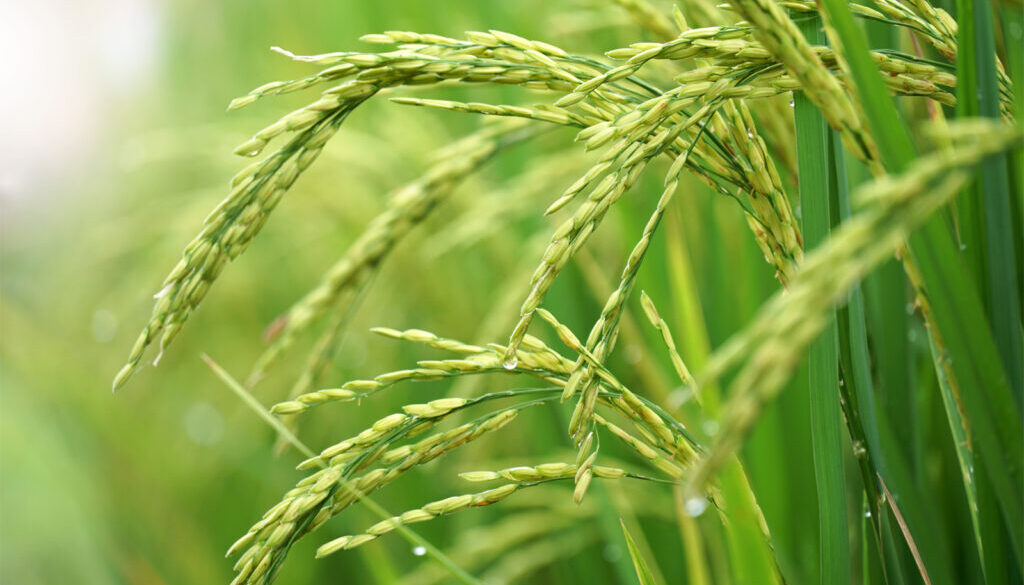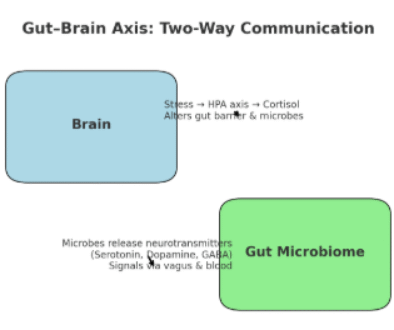The Power of Rice
By Meredith McGrath RD, LDN Corporate Dietitian
“Wellness isn’t only about the food you eat or the weight on the scale. It’s about joy & happiness.” – Meredith Mcgrath

Rice is the most popular grain globally and the primary dietary staple for more than half the world’s population. This tiny but mighty grain is nutrient-rich, supplying energy, complex carbohydrates, protein, fiber, beneficial antioxidants, and more than 15 vitamins and minerals.
Here’s the Scoop on U.S.-Grown Rice:
It’s a “100-calorie pack:” One half-cup serving of rice contains only 100 calories.
It’s a “free” food: Naturally sodium-, cholesterol-, glutenand GMO-free.
Rice packs a nutritional punch: It provides more than 15 essential vitamins and minerals, including folic acid, B vitamins, potassium, magnesium, selenium, fiber, iron and zinc.
Whole grain goodness: One cup of brown, wild, red or black rice provides two of the three recommended daily servings of whole grains.
White rice’s “wow” factor: One cup of enriched white rice has 23% of the recommended daily value of folic acid, a B vitamin the body needs to make new cells. It helps protect against birth defects when consumed by expectant moms.
Whole Grain Goodness
Step up your whole grain intake with U.S.-grown rice – a wholesome, nutritious and sustainable food you can feel good about eating.
Whole Grains Explained:
Every grain starts life as a whole grain. The whole grain is the entire seed of a plant, including the bran, germ and endosperm. Together as the whole grain, these components provide protein, fiber and many important vitamins, minerals and nutrients. Research shows that eating whole grains can help reduce heart disease, may reduce the risk of certain cancers, and may aid in weight maintenance.
Tips for Increasing Whole Grain Intake
- Make your rice colorful. Brown, wild, black, red and purple rice are 100% whole grain varieties.
- Try mixing brown and white rice together in your favorite dish for more complex flavor and texture. It’s also a great way to encourage kids to eat more whole grains.
- Cook a double batch of brown rice and keep it on hand for a quick start to your next meal. Cooked rice can be stored in the refrigerator in a tightly covered container for three to five days, or frozen for up to six months.
Gluten-Free and Flavor-Full
A growing number of consumers are going gluten-free due to celiac disease, gluten intolerance, or other food sensitivities. Rice is gluten-free, highly digestible, and the least allergenic of all grains, making it an important grain option for a gluten-free diet.
Keep Your Engine Revved All Day with Rice!
Rice is a nutrient-dense, complex carbohydrate that the body slowly digests to help you stay energized throughout the day. Plus, research shows that eating rice increases levels of the feel-good chemical serotonin, which helps boost mood and keeps appetite in check. So, come on, get happy with rice! Here are some quick tips to help you maximize your energy with rice:
Power up your plate: Rice pairs perfectly with other healthy energy-boosting foods such as vegetables, fruit, lean protein, seafood, beans, nuts and soy.
Rice + beans = nutritional power couple: When eaten together, rice and beans provide all essential amino acids, and deliver complete high-quality plant-based protein.
Refuel with rice: Rice is the ideal addition to any meal – low in calories, gluten-free, and packed with nutrients. Incorporate rice into your pre- and post-workout meals to optimize your body’s ability to recover and rebuild.
The Role of Rice in Weight Management
When people are looking to lose weight, the first foods often excluded from the diet are carbohydrates. But not all carbohydrates are created equal, and rice in particular is one that offers many health benefits and may assist in maintaining a calorie-controlled eating plan. Stop avoiding and start including rice:
Rice helps you take it down a notch: A recent study showed that people who eat rice are significantly less likely to be overweight or obese.
Farewell to fat: Rice is virtually fat-free, containing no cholesterol-raising trans-fat or saturated fat.
Redner’s Warehouse Markets
On March 1, 1970, Earl and Mary Redner placed their savings and faith into Earl’s dream to open a grocery store, and run it his way. Forty-five years and 53 stores later, Earl’s purchase of two failing stores has blossomed into the fulfillment of his dream to operate a successful family, employee, and locally-owned company throughout Eastern Pennsylvania, Maryland and Delaware.
Redner’s prides itself on being an adaptable and flexible company, able to accommodate to industry changes. Redner’s was the first supermarket in Pennsylvania to have scanners, the first to have a recycling program, one of the first to have in store pharmacies, salad bars, and the first employee-owned supermarket in the United States. Redner’s is committed to supporting the local community in which each Warehouse Market and Quick Shoppe is located, through a variety of supportive partnerships, community outreach, and enrichment programs. Through their HealthCents program, featuring dietician Meredith McGrath, RD LDN, Redner’s is dedicated to improving the well-being of their customers. This program offers consumers practical nutrition and lifestyle advice for incorporating a wide variety of foods in a healthful diet and lifestyle, and making healthy choices that are affordable and easy to apply to everyday life. We are honored and proud to call Redner’s a loyal community supporter and sponsor of Guts and Glory since our inception. Look for them every year at Guts and Glory Digestive and Wellness Expo, and learn how you can make healthier nutritional choices!



